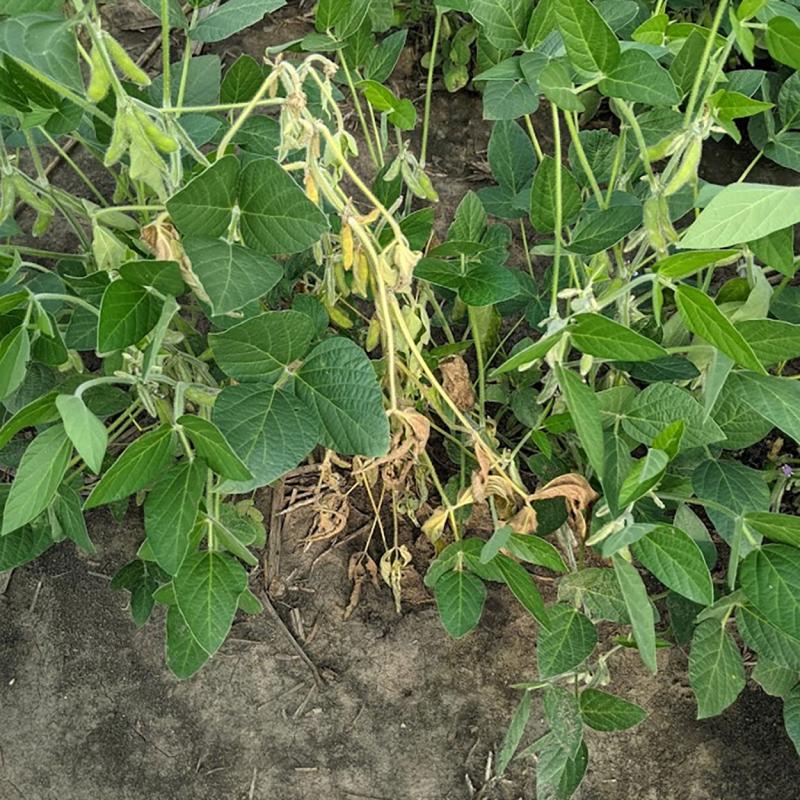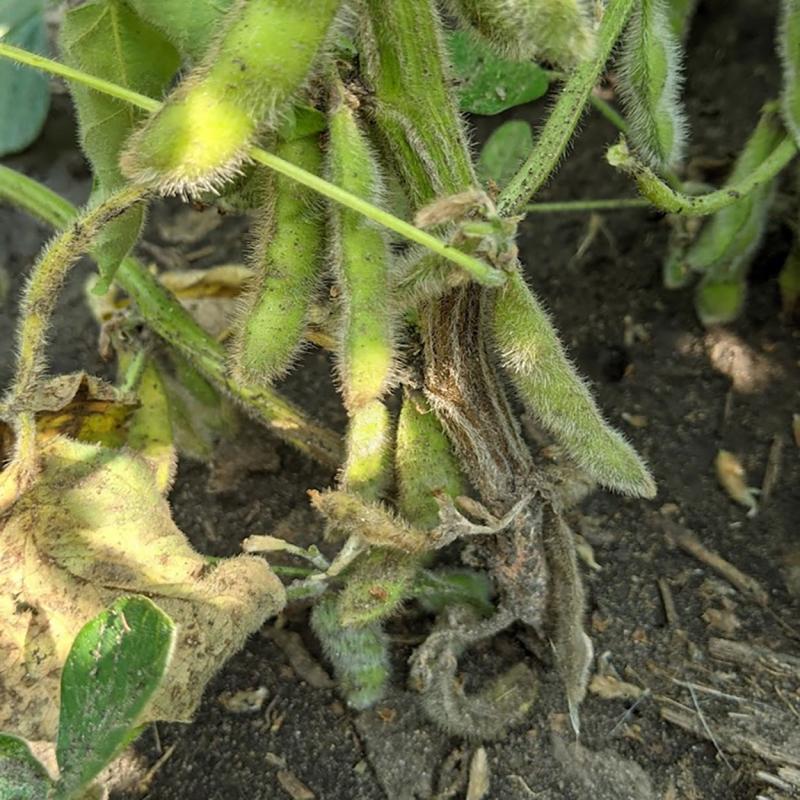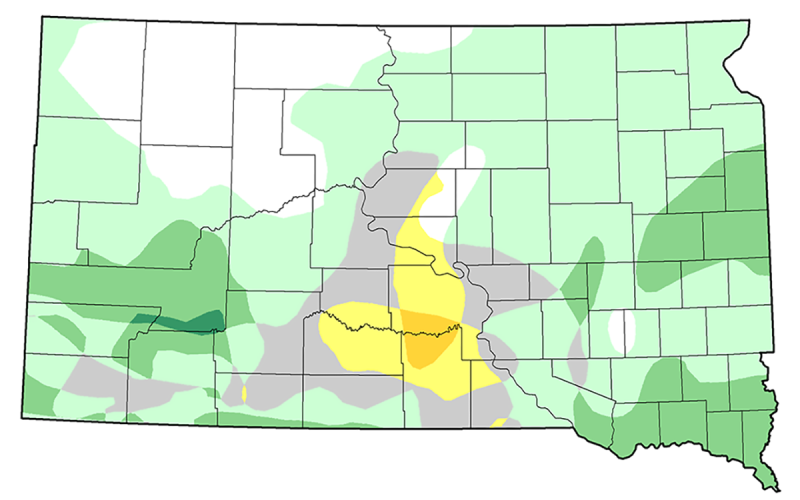
Written with contributions by Emmanuel Byamukama, former SDSU Extension Plant Pathologist, and Febina Mathew.
A few soybean fields are showing some wilting plants due to stem canker (Figure 1). The field entries and head rows are the most-impacted parts of these fields. Stem canker can be confused with Phytophthora root and stem rot or white mold when disease symptoms are observed in the upper canopy. The current dry conditions are stressing the plants and causing early development of stem canker in some of the affected fields. It is important to scout and accurately determine the cause of the disease in the field in order to make effective management decisions.
Stem Canker Causal Pathogen and Symptoms
Stem canker is caused by the fungi, Diaporthe spp. These fungi survive in infested crop residues and soil. Spores are splashed onto young plants by rain, but symptoms develop usually after flowering. Stem canker symptoms begin as small, reddish-brown lesions on the lower nodes of the plant. The lesions expand up and down the stem, causing the lesions to girdle the stem, then the plant starts to wilt and die (Figure 2).

Dead plants have leaves, which remain attached to the petioles. Infected plants occur in patches within the field with initial symptoms often confused as drought stress or other diseases (such as Phytophthora). Depending on the time of infection, affected plants may still have seeds in the pods, but upper pods may have none or very poorly filled seeds.
Management
Stem canker develops later in the growing season; therefore, a proactive management decision should be made before planting. Although there are no resistant cultivars against stem canker in the northern region, tolerance differences exist among cultivars for this disease. Consider stem canker ratings of soybean cultivars when selecting soybean varieties. Residue management through rotation and residue incorporation into the soil can help reduce the inoculum. Foliar fungicide efficacy against stem canker is not well established.

